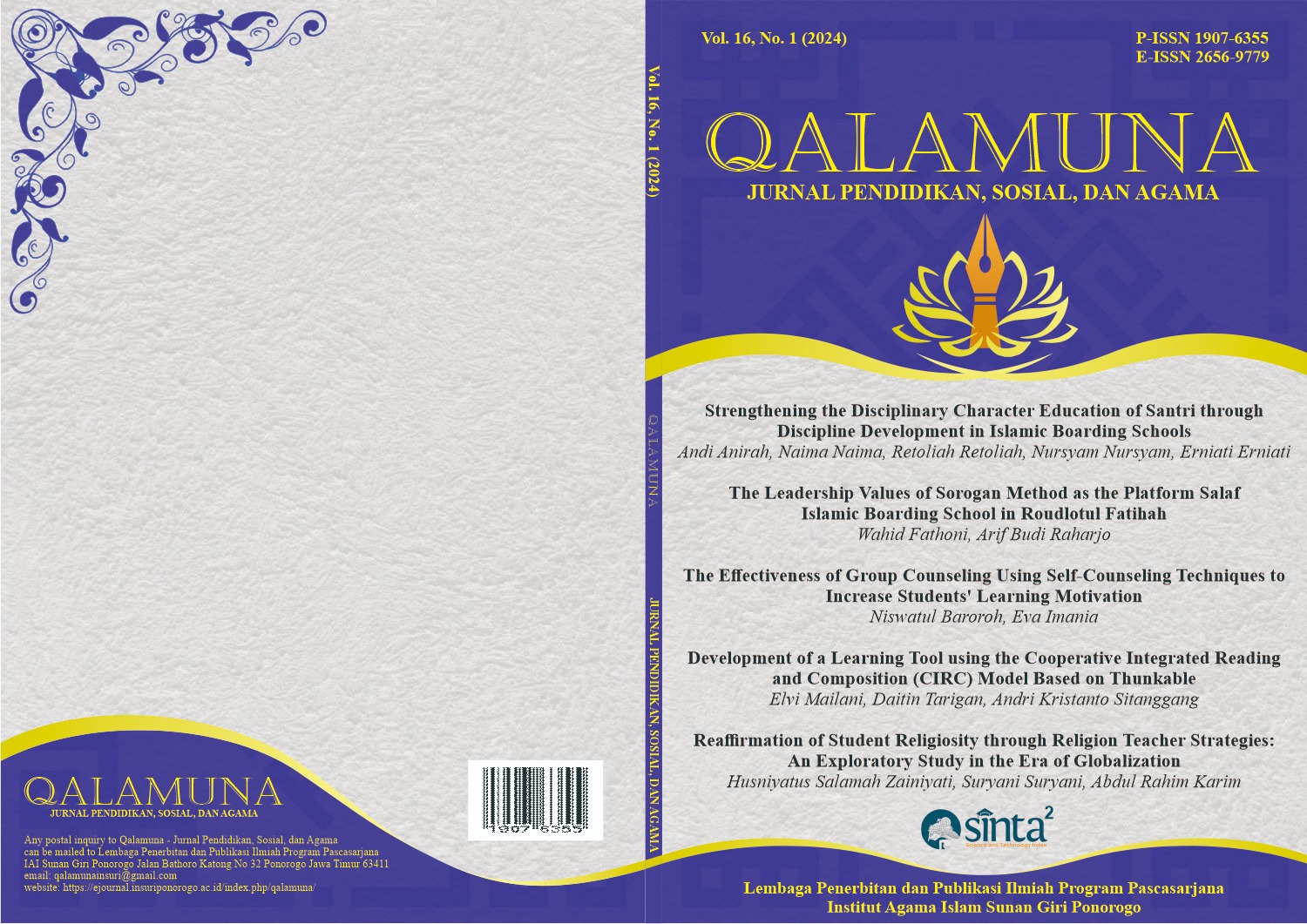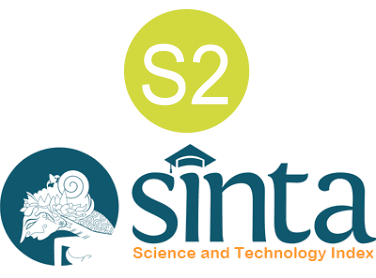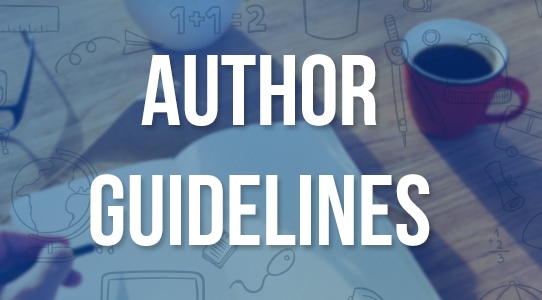Exploring Global Trends and Innovations in Educational Technology: A Bibliometric Analysis of Emerging Paradigms and Key Contributions
DOI:
https://doi.org/10.37680/qalamuna.v16i1.4697Keywords:
education; technology; bibliometricsAbstract
This study aims to investigate the latest trends in educational technology and identify emerging innovations in the scientific literature using the Bibliometric Analysis method. The background of the research confirms the importance of an in-depth understanding of the latest developments in technology-based education, given the rapid changes taking place in this domain. The results highlight the significant influence of countries such as the United States, Russia, Brazil, and China in initiating and realizing educational technology innovations. In addition, the study identified several significant journals, such as "Educational Technology Research," "Education and Information," and "Journal of Dental Education" that play a crucial role in documenting and disseminating information about the latest developments in educational technology. Another interesting finding is the emergence of the keyword 'gaming' as an innovation that increasingly dominates the educational technology literature, showing a trend towards game-based play and learning approaches in educational contexts. The conclusion of this study provides valuable insights for practitioners and researchers in the field of educational technology. This information can inform educational strategies, develop innovative projects, and direct future research to better understand and utilize educational technology in the learning process.
References
Abboud, R. (2020). Integration of nonparametric fuzzy classification with an evolutionary-developmental framework to perform music sentiment-based analysis and composition. Soft Computing, 24(13), 9875–9925. https://doi.org/10.1007/s00500-019-04503-4
Abdullah, M. H. (2020). Development and validation of the music education teaching practice E-supervision system using the google classroom application. International Journal of Innovation, Creativity and Change, 11(10), 102–116.
Abouelenein, Y. A. M., & Nagy Elmaadaway, M. A. (2023). Impact of Teaching a Neuro-Computerized Course Through VLE to Develop Computational Thinking Among Mathematics Pre-service Teachers. Journal of Educational Computing Research, 073563312311650. https://doi.org/10.1177/07356331231165099
Acevedo-Borrega, J., Valverde-Berrocoso, J., & del Carmen Garrido-Arroyo, M. (2022). Computational Thinking and Educational Technology: A Scoping Review of the Literature. Education Sciences, 12(1), 39. https://doi.org/10.3390/educsci12010039
Acioly-Regnier, N. (2020). Informal Learning in Mathematics Education. In Encyclopedia of Mathematics Education (pub.1125081673; pp. 373–380). https://doi.org/10.1007/978-3-030-15789-0_164
Adriani, P. A., Hino, P., Taminato, M., & Fernandes, H. (2023a). Construction of educational technology on non-violent communication between health professionals: An experience report. Revista Brasileira de Enfermagem, 76(Suppl 4), e20220414. https://doi.org/10.1590/0034-7167-2022-0414
Adriani, P. A., Hino, P., Taminato, M., & Fernandes, H. (2023b). Construction of educational technology on non-violent communication between health professionals: An experience report. Revista Brasileira de Enfermagem, 76(Suppl 4), e20220414. https://doi.org/10.1590/0034-7167-2022-0414
Afifah, K. R., & Istiqomah, W. N. (2022). Pengembangan Literasi Berbasis Mobile Learning pada Masa Pandemi Covid-19 di Madrasah Ibtidaiyah. Jurnal Basicedu, 6(2), 1659–1667. https://doi.org/10.31004/basicedu.v6i2.2198
Afni, E. N. N., & Huda, M. (2023). Social Inquiry Learning Strategy on News Text Learning in Junior High School. In Proceedings of the International Conference on Learning and Advanced Education (ICOLAE 2022) (pub.1163630081; pp. 661–672). https://doi.org/10.2991/978-2-38476-086-2_57
Agustin, J., & Fernandes, R. (2022). Interaksi Guru Pamong dan Mahasiswa Pratek Lapangan Pasca Pandemi Covid-19. Naradidik: Journal of Education and Pedagogy, 1(3), 230–238. https://doi.org/10.24036/nara.v1i3.47
Ahmady, S., Kallestrup, P., Sadoughi, M. M., Katibeh, M., Kalantarion, M., Amini, M., & Khajeali, N. (2021). Distance learning strategies in medical education during COVID-19: A systematic review. Journal of Education and Health Promotion, 10, 421. https://doi.org/10.4103/jehp.jehp_318_21
Aida, H., Sumarni, W., Marwoto, P., Subali, B., & Ellianawati, E. (2022). Development of the "Curious Scientist" Game to Practice Scientific Thinking Skills. Jurnal Penelitian Pendidikan IPA, 8(3), 1320–1328. https://doi.org/10.29303/jppipa.v8i3.1643
Alfiyah, Z., Hartatik, S., Nafiah, N., & Sunanto, S. (2021). Analisis kesulitan belajar matematika secara daring bagi siswa Sekolah Dasar. Jurnal Basicedu, Query date: 2023-09-24 18:05:34. https://jbasic.org/index.php/basicedu/article/view/1297/0
Allman, B., Kimmons, R., Rosenberg, J., & Dash, M. (2023). Trends and Topics in Educational Technology, 2023 Edition. TechTrends, 67(3), 583–591. https://doi.org/10.1007/s11528-023-00840-2
Almansour, E., & Kurt, M. (2022). Critical Thinking for Writing Using Facebook Under COVID-19 Lockdown: A Course Model for English Literature Students. Frontiers in Psychology, 13, 903452. https://doi.org/10.3389/fpsyg.2022.903452
AL-Takhayneh, S. K., Karaki, W., Hasan, R. A., Chang, B.-L., Shaikh, J. M., & Kanwal, W. (2022). Teachers' psychological resistance to digital innovation in jordanian entrepreneurship and business schools: Moderation of teachers' psychology and attitude toward educational technologies. Frontiers in Psychology, 13, 1004078. https://doi.org/10.3389/fpsyg.2022.1004078
Amri, M., Setyosari, P., & Ulfa, S. (2022). Pengembangan Virtual Classroom Berbasis Web Learning Pada Mata Pelajaran Bahasa Inggris Untuk Siswa Kelas VII. JKTP: Jurnal Kajian Teknologi Pendidikan, 5(2), 142–150. https://doi.org/10.17977/um038v5i22022p142
Angraini, L. M., Alzaber, A., Sari, D. P., Yolanda, F., & Muhammad, I. (2022). IMPROVING MATHEMATICAL CRITICAL THINKING ABILITY THROUGH AUGMENTED REALITY-BASED LEARNING. AKSIOMA: Jurnal Program Studi Pendidikan Matematika, 11(4), 3533–3544. https://doi.org/10.24127/ajpm.v11i4.5968
Antee, A. (2020). Student perceptions and mobile technology adoption: Implications for lower-income students shifting to digital. Educational Technology Research and Development, 69(1), 191–194. https://doi.org/10.1007/s11423-020-09855-5
Bilal, Hysa, E., Akbar, A., Yasmin, F., Rahman, A. ur, & Li, S. (2022). Virtual Learning During the COVID-19 Pandemic: A Bibliometric Review and Future Research Agenda. Risk Management and Healthcare Policy, 15, 1353–1368. https://doi.org/10.2147/rmhp.s355895
Bond, M., Bedenlier, S., Marín, V. I., & Händel, M. (2021). Emergency remote teaching in higher education: Mapping the first global online semester. International Journal of Educational Technology in Higher Education, 18(1), 50. https://doi.org/10.1186/s41239-021-00282-x
Brandão, J. L. A. (2022). Innovation, telecommuting and public educational libraries: Ways to digital transformation in the post-pandemic world of work. RDBCI: Revista Digital de Biblioteconomia e Ciência Da Informação, 21, 1–18. https://doi.org/10.20396/rdbci.v21i00.8670044/30794
Bruderer, H. (2020). Bibliografie zur Technik- und Naturwissenschaftsgeschichte. In Erfindung des Computers, Rechnerbau in Europa, weltweite Entwicklungen, zweisprachiges Fachwörterbuch, Bibliografie (pub.1130651609; pp. 661–1022). https://doi.org/10.1515/9783110669671-009
Celdrán, A. H., Ruipérez-Valiente, J. A., Clemente, F. J. G., Rodríguez-Triana, M. J., Shankar, S. K., & Pérez, G. M. (2020). A Scalable Architecture for the Dynamic Deployment of Multimodal Learning Analytics Applications in Smart Classrooms. Sensors, 20(10), 2923. https://doi.org/10.3390/s20102923
Crisiana, N. K. W., Agustiana, I. G. A. T., & Parmiti, D. P. (2022). Media Fun Thinkers dengan Latar Gambar Nuansa Budaya Bali Kelas 3 Sekolah Dasar Tema 7 Perkembangan Teknologi. Jurnal Pendidikan Multikultural Indonesia, 4(2), 52–63. https://doi.org/10.23887/jpmu.v4i2.39389
Evendi, E. (2022). Mathematical Thinking Styles and Its Implications in Science Learning: A Bibliometric Analysis. Jurnal Penelitian Pendidikan IPA, 8(3), 1503–1511. https://doi.org/10.29303/jppipa.v8i3.1720
Frith, K. H. (2023). ChatGPT: Disruptive Educational Technology. Nursing Education Perspectives, 44(3), 198–199. https://doi.org/10.1097/01.nep.0000000000001129
Huda, N., Misbah, M., Miriam, S., Harto, M., Rusmansyah, R., Hamid, A., & Muhammad, N. (2023). ANALISIS BIBLIOMETRIK: TREN PENELITIAN BERPIKIR KREATIF. Quantum: Jurnal Inovasi Pendidikan Sains, 14(1), 16–28. https://doi.org/10.20527/quantum.v14i1.14387
Jonatan, J., & Waruwu, A. T. M. (2023). Peran Teknologi Digital dalam Pengembangan Pembelajaran Kristen di Era Digital. ANTHOR: Education and Learning Journal, 2(6), 805–811. https://doi.org/10.31004/anthor.v2i6.233
Karalekas, G., Vologiannidis, S., & Kalomiros, J. (2023). Teaching Machine Learning in K–12 Using Robotics. Education Sciences, 13(1), 67. https://doi.org/10.3390/educsci13010067
Lin, T.-C., Tang, K.-Y., Lin, S.-S., Changlai, M.-L., & Hsu, Y.-S. (2022). A Co-word Analysis of Selected Science Education Literature: Identifying Research Trends of Scaffolding in Two Decades (2000–2019). Frontiers in Psychology, 13, 844425. https://doi.org/10.3389/fpsyg.2022.844425
Maharani, S., Nusantara, T., As’ ari, A. R., & Qohar, A. (2020). Computational thinking pemecahan masalah di abad ke-21. Madiun: Perpustakan Nasional: Katalog Dalam Terbitan (KDT).
Muhammad, I., & Triansyah, F. (2023). Panduan Lengkap Analisis Bibliometrik dengan VOSviewer: Memahami Perkembangan dan Tren Penelitian di Era Digital. In Books.google.com. https://books.google.com/books?hl=en&lr=&id=tZLQEAAAQBAJ&oi=fnd&pg=PA22&dq=%22muhammad+ilham%22+bibliometric&ots=S70dYGv8Nk&sig=F_j_eH2vh8zjkGRlntSf-Zen-5E
Munawar, W., Sriyono, S., Ramdhani, R., & Rajab, I. (2022). Evaluation of Technology Literacy Capabilities Through Automotive Simulator Assisted Learning. Teknologi Dan Kejuruan: Jurnal Teknologi, Kejuruan, Dan Pengajarannya, 45(2), 106–113. https://doi.org/10.17977/um031v45i22022p106-113
Poblete, P., McAleer, S., & Mason, A. G. (2020). 3D Technology Development and Dental Education: What Topics Are Best Suited for 3D Learning Resources? Dentistry Journal, 8(3), 95. https://doi.org/10.3390/dj8030095
Voskoglou, M. Gr., & Salem, A.-B. M. (2020). Benefits and Limitations of the Artificial with Respect to the Traditional Learning of Mathematics. Mathematics, 8(4), 611. https://doi.org/10.3390/math8040611
Yamakami, S. A., Nagai, M., Chutinan, S., & Ohyama, H. (2022). 3D Digital technology as an alternative educational tool in preclinical dentistry. European Journal of Dental Education, 26(4), 733–740. https://doi.org/10.1111/eje.12755
Downloads
Published
How to Cite
Issue
Section
License
Authors who submit manuscript retain its copyright and grant publisher right of first publication licensed under a Creative Commons Attribution-ShareAlike 4.0 International License (CC BY-SA 4.0) that allows others to access (search, read, download, and cite), share (copy and redistribute the material in any medium or format) and adapt (remix, transform, and build upon any material) the work for any lawful purpose, even commercially with an acknowledgement of the work's authorship and initial publication in Qalamuna: Jurnal Pendidikan, Sosial, dan Agama.












